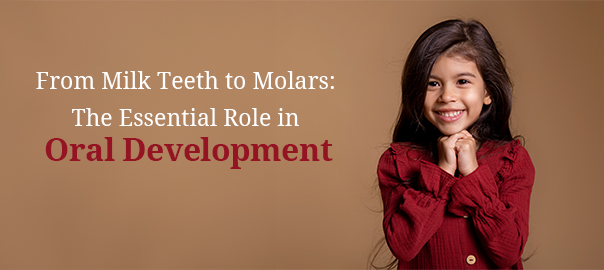
From Milk Teeth to Molars: The Essential Role in Oral Development
- The Fundamental Differences Between Milk Teeth and Permanent Teeth Exploring Their Developmental Impact
- Key Structural Variations
- Timeline and Transitions
- Speaking and Eating – The Early Years
- The Long-term Blueprint
- Why Both Sets Matter
- Treatment Approaches
- Natural Functions
- Looking After Both Sets
- Time of Appearance
- Key Takeaway
The Fundamental Differences Between Milk Teeth and Permanent Teeth: Exploring Their Developmental Impact
Walking through life, our mouths tell quite a tale – first with our baby teeth, then with the grown-up ones that follow. Let’s unravel this fascinating story of how these two sets of teeth shape our oral journey.
Key Structural Variations
- Milk teeth are noticeably smaller, sporting thinner enamel walls that wrap around a more compact pulp chamber. Think of them as nature’s “starter set” – perfectly sized for little mouths but more vulnerable to decay.
- While permanent teeth boast a robust 32-member squad, milk teeth keep it modest with just 20 players. Each one, though, is a crucial placeholder, mapping out territory for their future replacements.
Timeline and Transitions
Our oral development unfolds like a well-choreographed dance. Milk teeth typically start their show around 6 months, while permanent teeth wait in the wings until about age 6. Here’s something folks often miss – those first permanent molars? They sneak in behind the milk teeth without replacing anything!
Speaking and Eating – The Early Years
Milk teeth aren’t just space-savers; they’re speech coaches and food processors rolled into one. Picture a toddler learning to say “sister” or chomping through their first apple – that’s milk teeth at work! Their smaller size actually makes them perfect for young children learning to form sounds and manage solid foods.
The Long-term Blueprint
Remember how building blocks work? That’s basically what milk teeth do for our oral development:
- They act as guides, like tiny architectural models, showing permanent teeth where to emerge
- Through regular chewing, they help sculpt jaw development
- They maintain crucial spacing that prevents future crowding issues
Why Both Sets Matter
I’ve noticed parents sometimes shrug off milk teeth problems, figuring they’ll fall out anyway. But here’s the catch – these temporary teeth are actually setting up your child’s future oral health. Think of them as the opening act that determines how well the main show will go.
There you have it – the basic breakdown of cold sores vs. canker sores. So next time one of these troublemakers shows up, you’ll know exactly what you’re dealing with.
Always remember dear readers, a healthy mouth is a happy mouth. And we at Clove are aimed at keeping that smile healthy and happy!
Treatment Approaches
Milk teeth typically need gentler handling during dental work due to their more delicate structure
Filling materials often differ – dentists might choose glass ionomer for milk teeth versus composite resins for permanent ones
The recovery process tends to be quicker with milk teeth treatments
Natural Functions
Your child’s first set of teeth:
- Creates proper spacing for permanent teeth
- Helps develop clear speech patterns
- Enables effective chewing for proper nutrition
- Supports healthy jaw development
Meanwhile, permanent teeth:
- Provide lifelong chewing functionality
- Maintain adult facial structure
- Support mature speech patterns
- Offer greater durability for long-term use
Looking After Both Sets
Each type needs its own care approach. Milk teeth require extra gentle brushing but thorough cleaning, while permanent teeth can handle firmer brushing with more specialized cleaning tools. In both cases, regular dental check-ups remain key.
Time of Appearance
Milk teeth begin their journey around 6 months and stick around until about age 12. Permanent teeth start showing up around age 6, with wisdom teeth possibly making their appearance as late as early adulthood.
Key Takeaway
The shifting scene from milk teeth to permanent ones isn’t just about switching out smaller teeth for bigger ones – it’s an intricate process that shapes how we’ll eat, speak, and smile for years to come. Both sets play their parts in this ongoing story of oral development, each bringing its own unique contribution to the table.
By understanding these differences, parents can better support their children’s oral health journey, ensuring both sets of teeth get the care they need when they need it. Remember, healthy milk teeth typically lead to healthy permanent teeth – it’s all connected in the grand design of dental development.
Leave a Reply
Leave a Reply
Explore More Similar Posts
Explore More Blogs


Leave a Reply